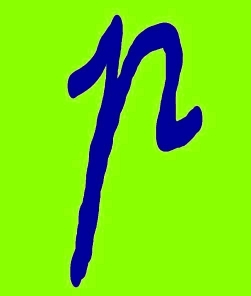In one of my previous pieces, I discussed returns on the Mega Millions lottery game, assuming that you buy a small number of tickets. In such a case winning the jackpot has zero probability. So I argued that if you want to estimate the profitability of the lottery as an investment, you have to remove the jackpot money from the calculation.
Today I will discuss what the formal expected return is. That is, I will include the jackpot money in the calculation. Since I argued against including the jackpot in my last article, you might wonder why I’ve then turned around to look into this.
I think this mathematical exercise will be fun. Besides, on a practical note, it is useful to know when the formal expected return is more than 100%, because then it might make sense to pool money with other people. Keep in mind though that if you want a chance to hit the jackpot, the total number of tickets you buy must be really big. For example, even if you manage to pool $10,000 for tickets, your probability of winning the jackpot in Mega Millions is only one in 17,500 — still minuscule.
If you buy only one ticket, you’ll lose. If you manage to pool a lot of money and the probability of the jackpot becomes noticeable, that is, non-zero, could the jackpot be large enough that the lottery becomes a good investment?
For this calculation, I’m still assuming that you buy a relatively small number of tickets. If you buy millions of tickets the calculation is slightly different, and I will write about that later.
You might think that when the jackpot is bigger than the odds, it makes sense to play. I am discussing the Mega Millions game, where the odds of winning the jackpot are one in 175 million. So if the jackpot is more than $175 million, then it is profitable to play. Right?
Wrong. As I mentioned in my previous piece, after reducing for taxes, you get about 16% of your money back through smaller payouts. Hence, you need to recover the other 84% through the jackpot. So the jackpot should be more than 175*.84 = 147 million dollars. This sounds even better. Right?
Wrong. No one receives the jackpot. Winners can chose to immediately receive the lump sum, which equals the money lottery organizers have actually set aside for it. Alternatively, the lottery organizers can invest the lump sum and give winners a yearly distribution over many years, the total of which will equal the jackpot.
Suppose for simplicity the lump sum is half of the jackpot. That means we need the jackpot to be $294 million ($147 x 2). Right?
Oops. As usual, we forgot about taxes. To exacerbate your pain, I have to add that the winnings are taxable. Suppose you have to pay 30% from the jackpot. That means the jackpot needs to be $424 ($294/0.7) million in order to justify pooling money. OK?
We haven’t seen jackpots that big yet. But neither have we finished the calculation. There is a probability that you might have to share the jackpot with other winners. To calculate this probability, we need to calculate the number of tickets sold. That means, your expected return depends not only on the size of the jackpot, but also on the number of these tickets.
But even if you know the number of tickets sold, we cannot calculate the expected returns precisely because people don’t always buy tickets with random combinations, but often pick their own numbers.
When the jackpot is large people start buying tons of tickets, so we can expect that many of them buy quick-picks. Let us assume for now that the vast majority of people do not choose their own numbers, but buy tickets at random. Suppose 200 million tickets were sold. That is a very big number. Last time that many tickets were sold was when the jackpot was $390 million in March 2007. By the way, that was the largest jackpot ever.
In order to finish the calculation, we need to establish the probability of several winners, given that 200 million random tickets were sold:
| Number of winners |
Probability |
| No winner |
0.3204 |
| One winner |
0.3647 |
| Two winners |
0.2075 |
| Three winners |
0.0787 |
| Four winners |
0.0224 |
| Five winners |
0.0051 |
| Six winners |
0.0010 |
| |
|
From here we can calculate the adjustment coefficient, that is, the proportion of money you are expected to get from the jackpot given that there are 200 million players in the game. The coefficient is calculated from the table above as (0.3647 + 1/2*0.2075 + 1/3*0.0787 +1/4*0.0224 + 1/5*0.0051 + 1/6*0.0010)/(1 – 0.3204), and is equal to 0.7379. We need to divide our previous figure of $424 million by the adjustment coefficient. The result is $575 million.
Given that a $390 million jackpot attracted more than $200 million in tickets, we can expect that the $575 million jackpot will make people completely crazy and attract even more money. So I do not anticipate that the Mega Millions game will ever have a positive formal expected gain. My conclusion is that not only is there no financial sense in buying a single lottery ticket, but also none in pooling money.
Of course, you can buy tickets for non-financial reasons, like pumping up your adrenaline. In any case, I showed you the method to calculate your expected return, or, more appropriately, your expected loss.
Share:





 This year I am again on the organizing committee of the
This year I am again on the organizing committee of the  Last year I promised to hold a math party during the program. But I had to cancel it due to a scheduling conflict with
Last year I promised to hold a math party during the program. But I had to cancel it due to a scheduling conflict with